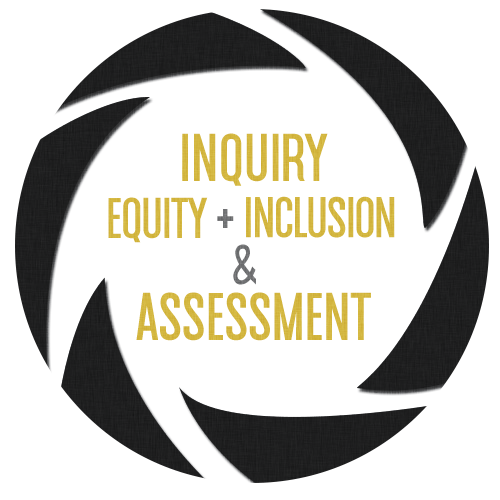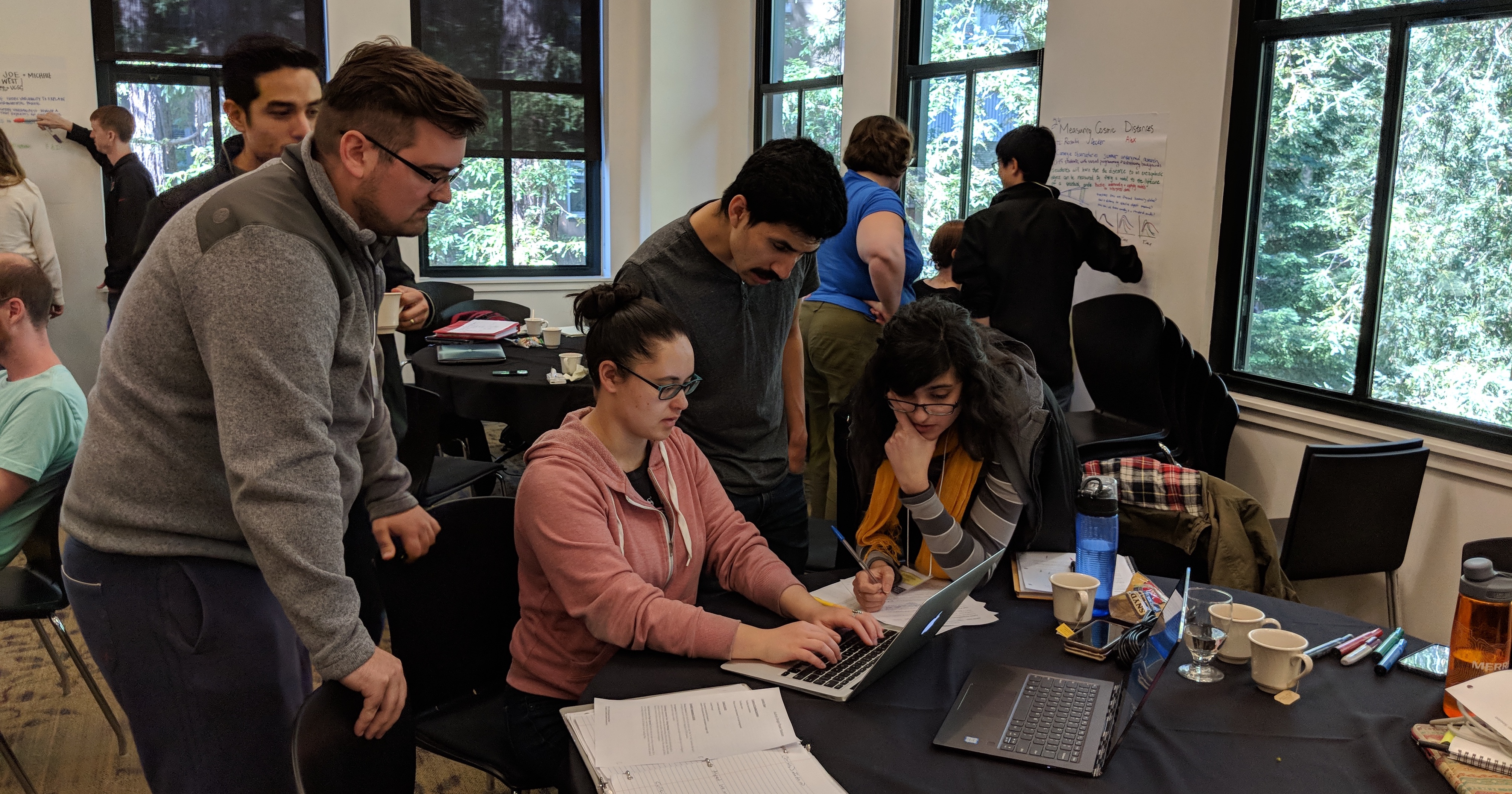Program Description
The Professional Development Program (PDP) experience
 |
Designed Around 3 Themes : Inquiry, Equity & Inclusion, and AssessmentPDP training is centered on three core themes that are founded in research – Inquiry, Equity & Inclusion, and Assessment. ISEE has recently begun to replace the language of “inquiry” with the concept of an AISLE (authentic, inclusive STEM learning experience) because this phrase is more relevant and descriptive to diverse audiences. |
The PDP model
The PDP encompasses a suite of workshops organized into:
- Two intensives: The Inquiry Institute and a Design Institute
- A practical teaching experience in a STEM venue
- Reflection on the PDP design and facilitation experience
The program begins in March or April each year, and participants complete their teaching experience sometime between May and November. Participants often return to lead teaching teams or take on other leadership roles in our community. These returners receive leadership and project management training as they adopt advanced roles. The overall program experience includes:
The Inquiry Institute
A 4-day series of workshops provides background in research that supports effective and inclusive teaching as well as training in professional skills. A major component of the Inquiry Institute is experiencing an authentic inquiry experience or AISLE – as a learner. Participants engage in one of two activities, such as "Light & Shadow" or "Analog To Digital". In teams led by a Design Team Leader (DTL), participants then take early steps toward designing their own AISLE. The PDP Inquiry Institute is required for all participants and is followed by attendance at a Design Institute.
Design Institutes
A 2.5-day series of workshops where participants work in teams led by a DTL to further develop their AISLEs, with a focus on employing research-based teaching methods and creating equitable learning environments. The goals of the Design Institutes are for teams to: work together to design an AISLE, establish a process for putting into practice the equitable and inclusive strategies in their design, and plan for teaching their designs in their venues.
Independent Design & Preparing to Teach
After leaving the Design Institute, teams work independently and with coaching to finish designing their activity. Teams meet in person or remotely to create a plan that outlines the details of their AISLE design and facilitation plan. Closer to the teaching date, the teams meet with an ISEE instructor in a final workshop that transitions them from designing their activity to preparing for in-the-moment teaching.
Teaching Experience
PDP participants teach as a team the activity that they have designed. This is an essential part of the PDP experience, and is often transformative, as PDP participants get to put into practice the concepts and strategies learned through the PDP, now with actual learners.
Reflection and documentation
The PDP experience culminates with each PDP team debriefing their experience. This is an important part of the experience and a process that many alumni have come to value and use in their post PDP experiences. ISEE provides a format that facilitates the process of debrief and reflection, encouraging participants to consider ways in which they could improve and redesign. Participants each complete an individual post-teaching report, which can be used as a basis for future teaching statements and job application materials.
PDP Approach
The PDP models many effective teaching strategies through a well-designed AISLE that is used as an example, and requires that participants spend a great deal of time carefully and collaboratively designing their own AISLE. This experience will likely be the most time that participants will ever spend on designing a single activity, because it is meant to be a transformative design and teaching experience that participants draw on for many years. The program includes discussions on education research and theory, emphasizing why and how the strategies work, so that PDP participants are equipped to select and adapt teaching strategies in new contexts, beyond their PDP experience. The PDP does not provide a recipe, or a simple list of strategies, but rather builds a foundation for participants to innovate from. It focuses on things that are hard to teach, like deep conceptual understanding and cognitive practices or reasoning skills. Finally, the PDP focuses on the small things that a single instructor can do to make learning more equitable, through the design of a learning activity or a brief interaction with a student.

